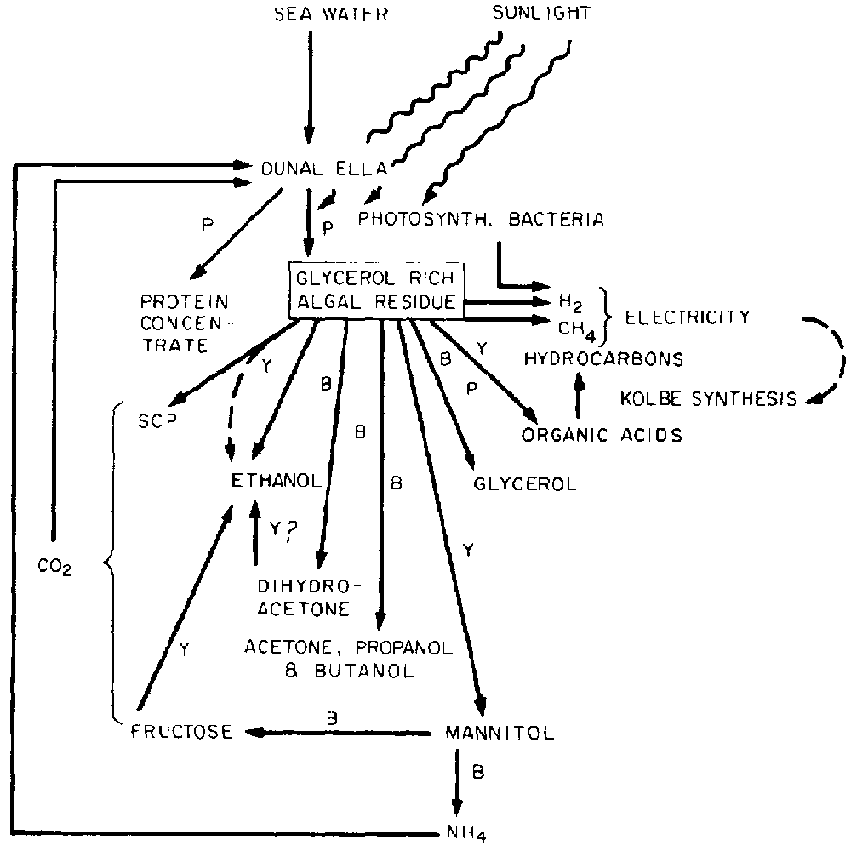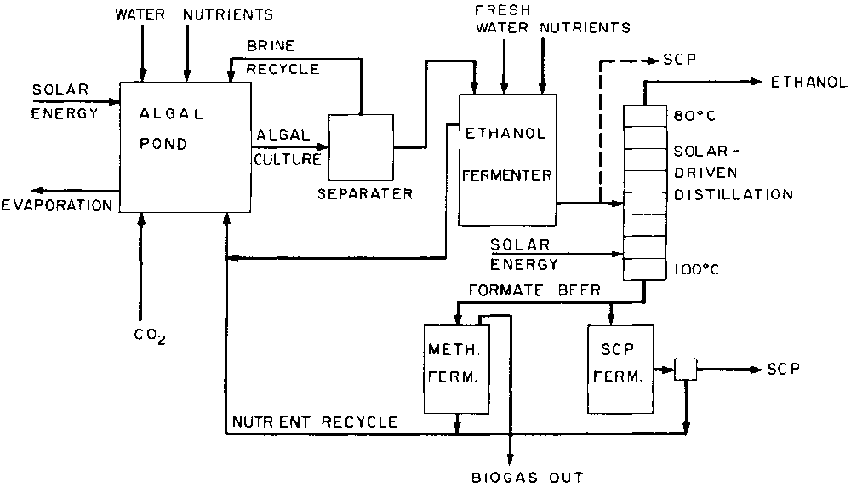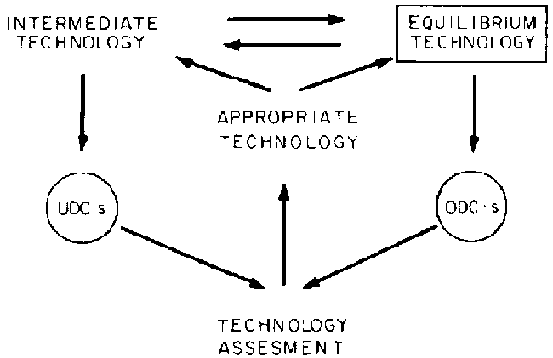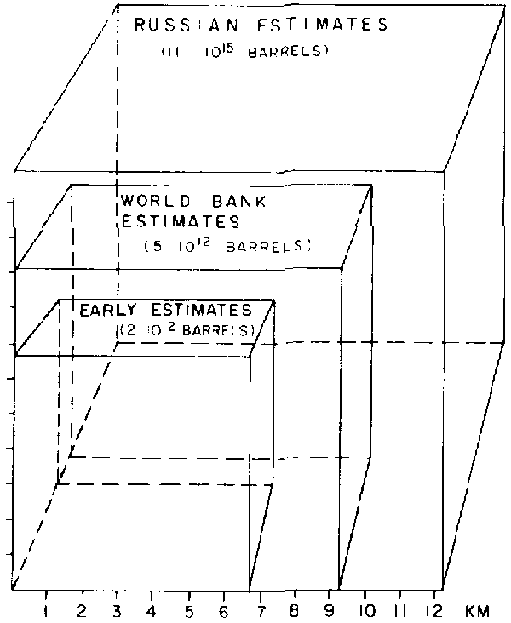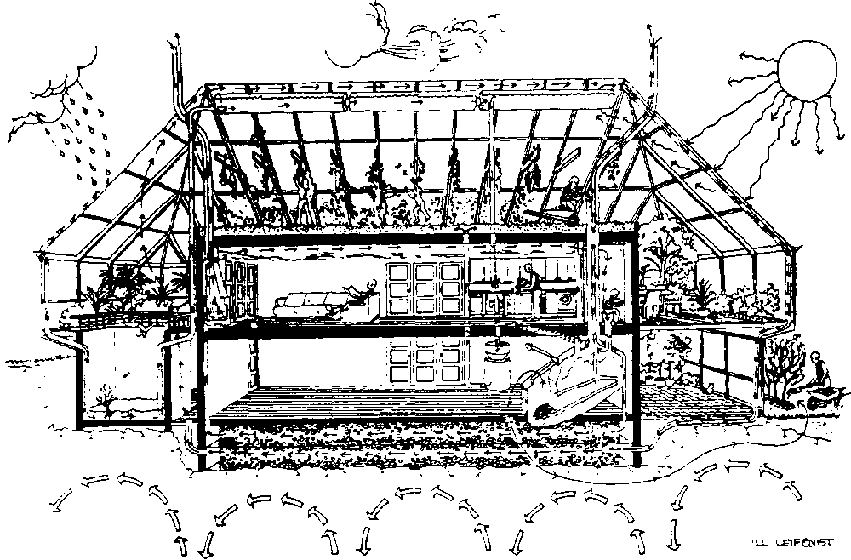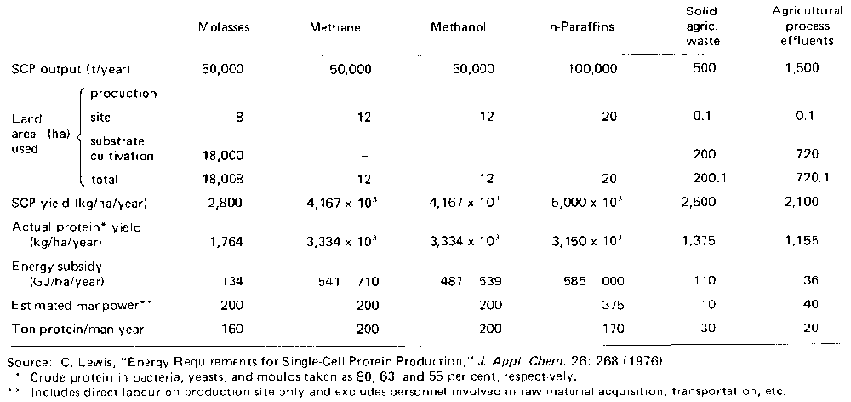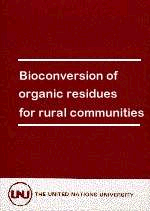
Appropriate biotechnology - summary remarks[edit | edit source]
Carl-Goran Heden
Karolinska Institutet and the Medical Research Council, Stockholm, Sweden
The United Nations University is a structure for joining forces, and it is consequently most appropriate that this conference has taken place with two such fine organizations as INCAP and ICAITI as co-hosts. Hearing Drs. Scrimshaw, Burgers, Tejada, and Dengo outline the aims of those organizations has obviously served as a source of inspiration for the participants.
Summarizing a conference of this type is, however, a bit unfair because one tends to underestimate the value of the contacts that are established outside the formal structure of the meeting. On this particular occasion the value of those contacts has been quite obvious, and can certainly be partly traced to a most hospitable environment. However, I think there is general consensus that C.A. Shacklady, R. Bressani, and the other organizers should also take much credit for having made up such a catalytic mix of professionals, nationalities, and interests. This mix has taken its intellectual substrate from the products of photosynthesis, but its interactions have certainly not been restricted to the hours of the day when the sun was shining over this beautiful country.
However, my charge is to summarize the formal meetings, which have surely provided much food for thought to the United Nations University Task Force on Bioconversion of Organic Residues for Rural Communities. This now requires a monumental digestion effort, but its Chairman, P. van der Wal, as well as W. Barreveld from FAO, simplified matters by starting the conference with overviews on the availability, composition, and nutritional value of the various organic residues that the meeting should consider. van der Wal reminded us of the fact that providing better and more equitably distributed food is a multi-faceted problem where the utilization of organic residues could play a central role. However, an effective strategy requires a comprehensive review of alternative treatments (physical, chemical, and biochemical) as well as a practical evaluation of various conversions, both via the microbial route and through animals. With straw as an example of one usable substrate, later speakers illustrated how different process combinations might possibly be used. M.G. Jackson, for instance, described how alkali treatment of straw could improve the efficiency of ruminants acting as bioconverters. Their dung might then be regarded as the raw material for composting, as described by T. Matsuzaki, or for biogas production before the mineral nutrients are finally returned to the soil. Alternatively, this particular residue could indirectly be converted to human food by R. Alicbusan's mushroom cultivation method, before the straw residues are digested or returned to the field. To such established methods may now be added a range of new possibilities like the Purdue (Tsao) technique to solubilize cellulose, or microbial digestion with microorganisms, such as Aspergillus terreus, described by H. R. Srinivasan.
W. Barreveld and several subsequent speakers emphasized the dynamic character of the agricultural residues that could be regarded as a nuisance, a waste, or a resource out of place, depending on the circumstances. severe constraints on their use are: scattered production, seasonal availability, lack of know-how, social restrictions, transport costs, and pollution. Lack of credit is another serious hindrance. Pollution was again underlined by M. la Rivi�re, when he reviewed the environmental impact of waste materials, and cited sewage treatment as man's largest single big-industry. This, however, developed without much consideration either for the potential of applied microbial ecology or for the energy costs of the aerobic process. However, the attitude with regard to the management of night soil and fish pond fertilization is now changing in a direction that could greatly serve rural development. This was underscored by J. Bardach in his discussion of the value of fertilization with faecal matter, for instance from ducks, in aquaculture ponds. He described the potential of fish ponds, but also warned against recommending aquaculture to people who are not ready for this relatively exacting technology. It must take into account not only such things as stocking density, flow rate, and oxygenation but also the interdependence of food webs that could be very different in various parts of the world.
Z. Berk's data on fish pond fertilization and on the feed value of sewage-grown algae were promising, because, even if algae do concentrate heavy metals, these do not appear in the meat of the animals consuming feeds fortified with algae. Drying costs have been a serious constraint, but this has been partially overcome by heat-drying, which also increased digestibility. Fish, poultry, and pigs would be the natural consumers of algal feeds, but T.R. Preston's emphasis on the importance of so-called "by-pass nutrients" as feed-back controllers of fodder consumption in ruminants forcefully brought home not only the significance of protein-rich leaf crops as fodder, but also the possible significance of algal blooms on the metabolism of ruminants. These animals are, of course, powerful methane producers, but this carbon loss attracted less attention from the participants than the deliberate production of biogas in digesters As shown by E. DaSilva, this is now an established rural practice in many parts of the world, but R. Rolz reminded the participants of the great scope for further developments, and of the need for further technical and economic evaluation As far as the input is concerned, T.K. Chose showed how conversion efficiency could be improved by choosing a suitable mix where water hyacinth and algae could be important components. G. Shelef stressed the potential of sewage-grown algae as fodder, but also indicated how algal ponds could be directly integrated with biogas production. This could also benefit from the application of high technology both in the form of materials, for instance the bag-digesters mentioned by E. DaSilva, or concepts like a geodesic dome structure described by C.V. Seshadri.
With regard to solid agricultural wastes, J. Porter gave an overview of the potential of microbial processes for turning a wide range of organic residues into valuable products, ranging from D-lactic acid from sulphite liquor, to mushrooms grown on ligno-cellulosic materials. In certain instances, like the Brazilian alcohol project, the quantities of biomass produced as a by-product can become very large and might be highly suitable for fodder use. Such integrated utilization of photosynthetic products will certainly assume growing importance, and is a feature of many advanced processes like the Israeli production of glycerol from halophilic algae. Ben Amotz and Avron not only get 8 9 of intracellular glycerol per square metre of pond surface per day, but also 11 9 of protein and 400 mg of carotene (1). As indicated by Figure 1, which is taken from work on Dunaliella algae in my own laboratory (2), the fermentative upgrading of the lysates opens up the opportunity for running biosystems not only in the humid tropics, but also in arid lands that comprise quite a bit of the earth's surface (Table 1). Figure 2 shows how an integrated system for making a liquid fuel out of this photosynthetic product might look (3).
Figure. 1. Possible Routes for the Utilization of Photosynthetically Produced Glycerol. B = bacteria; P = processing; Y = yeast. (From Heden [2])
TABLE 1. Primary Productivity of the Earth - Distribution of 155,200 Million Tons D.W./Year on 510 Million Km�
| % | Area | % productivity | Net | |
| Continents | 29.2 | 64.6 | ||
| Forests | 9.8 | 41.6 | ||
| Woodland | 1.4 | 2.7 | ||
| Tundra and desert | 5.1 | 1 5 | ||
| Grassland | 4.7 | 9.7 | ||
| Bare desert | 4.7 | |||
| Cultivated land | 2.7 | 5.9 | ||
| Fresh water | 0.8 | 3.2 | ||
| Oceans | 70.8 | 35.4 | ||
| Reefs and estuaries | 0.4 | 2.6 | ||
| Continental shelf | 5.1 | 6.0 | ||
| Open ocean | 65.1 | 26.7 | ||
| Upwelling zones | 0.08 | 0.1 | ||
| Totals: | 100 | 100 | 100 | 100 |
Source: H. Lieth, 2nd National Biological congress, 1971.
Admittedly, processes of this kind are not yet appropriate for village-level applications, but they underline a possible future projection from a simple start with robust systems to a diversified agro-industrial development. In fact, the potential of genetic engineering and effective starter management should not be underestimated when considering appropriate biotechnology. This is very far from being a second-rate technology. Indeed, it is often far more difficult to develop a simple process than to apply the materials and control theory for advanced technology. Against this background, I am sure that I speak for all of us who come from industrialized countries when I express admiration for the achievements in the developing parts of the world as they have been described at this meeting.
Figure. 2. Hypothetical Integrated System for Ethanol Production (From Williams et al. [3])
Modern big-engineers have much to learn from the traditional fermented food practices that K. Steinkraus reviewed as a means to improve digestibility, keeping quality, and vitamin content of many agricultural products. In the humid tropics, perhaps the lactic fermentations that were mentioned by R. Stanton deserve special attention. Personally, I feel that this preservation technique might also have significance as a means to permit fermenter operation at the village level. After all, a village fermenter might have to be made from wood or ferrocement and might be expensive or difficult to sterilize by steam. Of course, one could use �-propiolactone, which easily hydrolyzes to a non-toxic chemical (4), but perhaps a more realistic approach would be to alternate lactic fermentations with some that are more prone to contamination. This would be much along the same principles as using alternative crops to avoid insect pests.
In the area of fermented foods, the Japanese developments summarized by H. Ebine illustrated how many of these traditional systems can be improved and modified, and C. Cooney underlined the scope for innovations in rural-level microbiology when he pointed out the potential of immobilized cell techniques and biocatalysis in solid substrate systems. In this latter category, the process for protein fortification of cassava starch described by J.C. Senez illustrated a highly suggestive new approach. This seemed to have the characteristics of an appropriate biotechnology, provided, of course, that a reliable system for starter distribution can be established. That problem should be a challenge to both bio-engineers and to experts on logistics. In fact, the multitude of opportunities described at this meeting, and the innovative applications at the village level described by G.S. Venkataraman with regard to biofertilizer production, and by C.V. Seshadri on wind-power systems, require the overview of a systems analyst. M. Slesser described such an approach, which not only distinguished between energy stocks and energy fluxes, but also brought land use and the economic aspects of various investments into focus. This is obviously an essential feature, because major emphasis must be put on the basic purchasing power of the poorest segment of the target population.
In this connection, I wish to cite a few lines from the report of Working Group II that met in Houston in early November 1978, under the chairmanship of Dr. A. King (5). It notes: "There is an increasing awareness of the interdependence of nations, problems, scientific disciplines and objectives. This is leading to a gradual acceptance of a holistic and integrative approach to the problems of development. These terms, holistic and integrative, are to be understood in several senses. Firstly, the problems of a nation, of a city, of a village are to be seen as interconnected to the extent that they have to be tackled simultaneously and as a complex rather than separately and sequentially. Again they all possess economic, social, cultural, and political facets which have to be considered together and cannot be resolved by the politician alone, or by the scientist, engineer, or economist in isolation. Thus with regard to resource utilization, it is necessary to consider all the available resources, agricultural, forest, soil, water, micro-organisms, plants, animals, men and women." Funds and equipment may be important, but ". . . many excellent schemes and devices of proved value remain un-used at the field level when motivation and incentive are lacking. Any national campaign for bioresource development must therefore take into account the need to generate motivation for their use by demonstrating how the individual family and village would benefit from the use of the new possibilities and providing initial incentives for this."
I was interested to note that R. Alicbusan also underlined this need. Statements such as those cited above illustrate awareness about important constraints, but also a guarded optimism that a trans-disciplinary effort will yield a rapid effect. This may perhaps be true in the production of fuel and fertilizer, but is a different kettle of fish in the case of food and fodder products. From this point of view, it was probably wise to conclude the meeting by a series of reminders about the complexity and expense of testing acceptability, digestibility, and toxicity, which are, of course, essential adjuncts to the chemical analysis of food and fodder products. E.J. van Weerden's example of the selenium and pelletization effects in an SCP test was certainly a warning for many of us.
The problem of evaluating the quantity of protein addition needed to achieve a significant effect in human foods was illustrated by R. Bressani's bean/cassava studies. Foods based on algae might also require extra inputs from food technologists, even if the nucleic acid content does not seem to offer the same problem seen in yeasts, fungi, and bacteria. The latter group also requires special attention as far as toxic compounds are concerned. The great variety of products now being discussed may actually require methodological shortcuts limiting the need for large-scale animal testing. C.A. Shacklady was optimistic that such short-cuts are indeed possible, and brought a reasonable risk/benefit analysis within sight. The general approach would be a combination of extensive chemical analysis with in vitro mutagenicity tests and limited animal tests followed by careful autopsies.
A similar optimistic note could be detected in N.S. Scrimshaw's review of the public health aspects and earlier fears, political overtones, and cultural resistance that had influenced SCP development. In fact, the health problems still discussed in the context of SCP production can now be resolved by an appropriate test matrix. Village-level products, however, present a wider range of problems that must be considered. The successful feeding of microbial biomass product to farm animals is in itself a satisfactory test, but MBP for human consumption will require string gent tests in several species of experimental animals before careful tolerance and nutritional studies in human subjects.
Many of the techniques discussed have a very wide application, which is important because it means that the developing and industrialized countries have common interests that should stimulate joint-research efforts. In fact, the intermediate technology that the less developed countries need now will have a lot in common with the equilibrium technologies that the industrialized countries are likely to need in the beginning of the next century (Figure 3). That will be a time when we will have to start thinking about closing the carbon cycle, and the size of the fossil fuel reserves (Figure 4) will force the saving of energy in food production (Table 2) and in the choice of substrates. The change from a cowboy to a spaceship society, to use G. Shelef's expression, has in fact already started, as expressed by the peculiar abbreviations that are now beginning to appear in the literature (Table 3) and by the mushrooming of so-called autonomous houses that operate at a very high level of recycling (Figure 5).
Figure. 3. The Interaction between Intermediate and Equilibrium Technology. UDC= underdeveloped countries; 0DC = overdeveloped countries
Figure. 4. Various Estimates of the Size of Fossil Fuel Reserves
Figure. 5. The "Nature House" at Saltsj�baden outside Stockholm. (Copyright Ark. Bengt)
By using some imagination, many experts (cf. Europe 2000) already see the communications and biotechnology explosions driving us towards highly decentralized societies devoid of the slums and shantytowns that have now become a cancer in our civilization. The full and intelligent utilization of the bioproductivity of this planet may be our best chance to alleviate the negative aspects of urbanization, which are not only caused by city pull, but also by a rural push brought on by capital- and energy-intensive agriculture (6). Increased productivity is certainly essential, but there is every reason to ask if more efficient utilization of organic waste materials does not offer alternatives to our current practices. The Natural Resources Programme and the World Hunger Programme of the UN University have jointly chosen a singularly important focus for their efforts. A problem that is recognized becomes a challenge, not only for large organizations, but also for us who have had the privilege of participating in this highly stimulating workshop.
TABLE 2. Scale of SCP Production Plants, Yields/Land Area, and Labour Requirements
TABLE 3. Some Space-Age Abbreviations
| LOPSOL= |
Low Profile Style of Living (Chicago) Hawthorne Woods Environmental Center |
| IUS= |
Storage System Design and Techniques for Optimizing Energy Conversion in Integrated Utility Systems (Batelle, Columbus, Ohio) |
| MIUS= |
Modular Integrated Utility and Total Energy Systems ERDA |
References[edit | edit source]
1. A. Ben Amotz and M. Avron, "Glycerol, �-carotene and Dry Algal Meal Production by Dunaliella," in Proceedings of the First International Conference on Production and Use of Microalgae Biomass, Israel, 17 - 22 September 1978 (Proceedings in press).
2. C.-G. Hed�n, "The Potential of Systems Integration in Microbial Photosynthesis," Biochem. Soc. Trans. 7 (1): 94 (1979).
3. L.A. Williams, E.L, Foo, A.S. Foo, I. Kuhn, and C.-G. Hed�n, "Solar Bioconversion Systems Based on Algal Giycerol Production," Biotech. Bioeng. Symp. 8 (in press).
4. I. Toplin, "Continuous Chemical Sterilization of Microbiological Media with �-propiolactone," Biotech. 8ioeng. 4: 331 (1962).
5. A. King, "Challenges for International Development," report of Working Group 2, International Conference on Bioresources for Development, 6 - 10 November 1978, Houston, Texas, USA.
6. C.-G Hed�n, "Enzyme Engineering and the Anatomy of Equilibrium Technology," Quart. Rev, Biophysics 10: 113 (1977). Warne, Alg�v�gen 2.13300 Saltsi�baden-S.)
